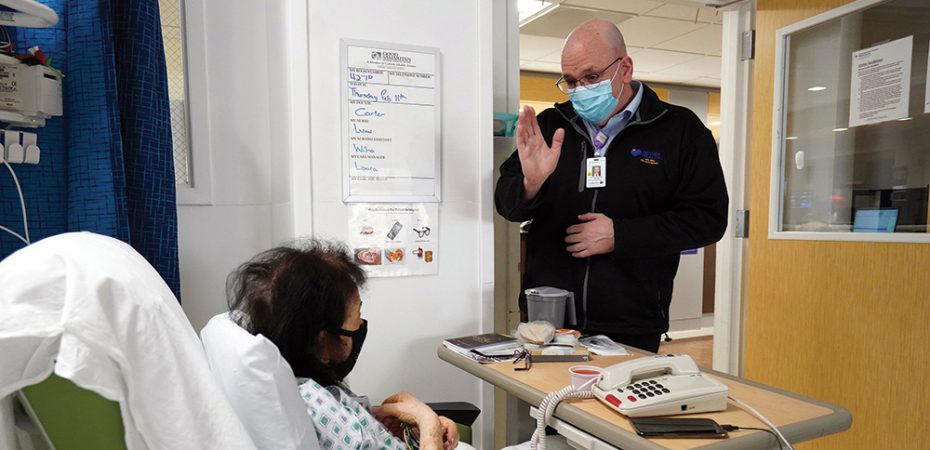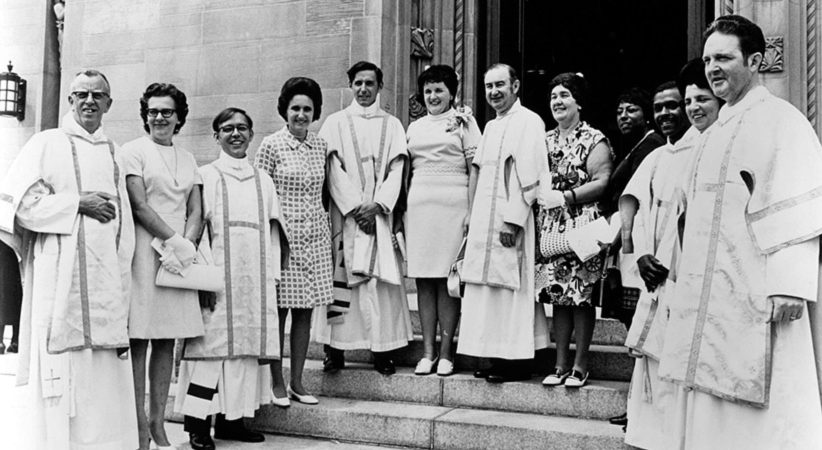Transforming a Crime into a ‘Medical Treatment’
How to educate ourselves to protect vulnerable lives and prevent a tsunami of end-of-life deaths
Rita L. Marker Comments Off on Transforming a Crime into a ‘Medical Treatment’
When was the last time you heard about “aid-in-dying,” “death with dignity” or “end-of-life option”?
Those are only a few of the euphemistic labels used by proponents of assisted suicide for the practice of prescribing a massive overdose of drugs to cause death. (Note: In an assisted suicide the patient does the last act such as consuming the lethal-drug overdose). This is different than euthanasia in which a third person such as a doctor or nurse administers a lethal injection.
The vast majority of people are completely unaware that the crime of assisted suicide has been transformed into a “medical treatment” in 10 states and the District of Columbia. (In addition, a court decision in one state permits doctors to use the patient’s request as a defense against charges of assisted suicide.) And, currently, there are efforts underway in all remaining jurisdictions to do so.
Every one of the laws and proposals declares that deaths taking place after taking drugs prescribed for the purpose of ending life are not to be considered suicide for any purpose. Thus, by changing the label, it is intended to make the action acceptable.
Those who promote assisted suicide work constantly. They are well-meaning, but their good intentions do not protect people from the deadly content of their proposals. They continually seek ways to gain acceptance for their agenda. When met with a roadblock, they don’t give up. They work even harder. They are committed. They talk with friends, colleagues and others. They work to change hearts and minds.
Between the passage of Oregon’s “Death with Dignity Act” in 1994 (which went into effect in 1997) and the end of 2019, hundreds of similar bills were introduced. But it took until 2008 for the second assisted suicide bill to pass in Washington state. Several other states followed, yet it was slow going for those who are seeking to change the law in every state.
Hawaii had been trying to pass such a law since 1998. After another loss in Hawaii in 2017, the assisted suicide lobby in that state proclaimed, “We will retool, reboot and start over,” until every state has a law permitting every American “to choose from the full range of end-of-life options without interference from the government or the church.”
Their hard work paid off. In April 2018, the “Our Care, Our Choice Act” was signed into law. It went into effect on January 1, 2019.
A Matter of Choice?
Without exception, any assisted suicide law or proposal is described as a “choice.” But is this really about choice?
Some doctors actually suggest to patients that they should consider “death with dignity” for the sake of loved ones.
For example, when an Oregon woman accompanied her seriously ill husband to the doctor, she thought they’d be getting badly needed help. But the “help” that she heard the doctor suggest was frightening. “I overheard the doctor giving my husband a sales pitch for assisted suicide.” She heard the doctor tell her husband about how good it would be if he chose to end his life: “Think about what it will spare your wife. We need to think of her.”
Few advocates of assisted suicide are open about its impact. An exception to this is a statement by Derek Humphry (co-founder of the Hemlock Society, now called Compassion & Choices).
Soon after the Oregon law went into effect, Humphry wrote, “In the final analysis, economics, not the quest for broadened individual liberties or increased autonomy, will drive assisted suicide to the plateau of acceptable practice.”
Cheaper Treatment?
There is no question that a prescription for a deadly overdose of drugs is much less expensive than treatment for a serious illness. This has led insurance plans — both private and governmental — to cover the cost of assisted suicide.
An official Oregon website explains: “The DWDA [Death with Dignity Act] does not specify who must pay for the services. Individual insurers determine whether the procedure is covered under their policies (just as they do with any other medical procedure).”
This is illustrated by the experience of a California wife and mother of four who was diagnosed with a terminal form of scleroderma. Her insurance company initially denied coverage for treatment but, five months after denial and her doctor’s seeking coverage for necessary chemotherapy, she received word that the treatment would be covered.
But soon, a week after California’s assisted suicide law passed, she received word that coverage of chemotherapy was again denied.
Again, her doctors appealed, but to no avail.
She asked if suicide pills would be covered and was told, “Yes.” And the cost for the deadly drugs would only be $1.20.
Once an assisted suicide law is passed, it may be a choice for the comfortably well-off but the only medical treatment the poor can afford.
Due to the pandemic and the slowdown of activity in legislatures across the country, no new assisted suicide bills passed in the United States in 2020.
However, in 2021, that changed. New Mexico passed an assisted suicide bill. That law adds new elements. For the first time, an assisted suicide law permits not only physicians but also advance practice nurses and nurse practitioners to replace physicians as lethally prescribing and consulting clinicians.
Also, there are proposals to expand the laws in states where assisted suicide is already permitted. What was previously called a “safeguard” is now called a “barrier.” Referring to assisted suicide, which he called “medical assistance in dying,” one lawmaker explained that “the law was always meant to be a continuum, not an end point.”
For example, the fact that a patient must make two requests for the deadly drugs 14 days apart is considered a barrier. Thus several states with existing laws have decreased the number of requests to one.
Reports Meaningless
Perhaps the most alarming part of such laws is what is not in them.
Once the prescription is filled, there is no way to know whether the patient was tricked, forced or coerced into taking the drugs. All requirements essentially stop when the prescription is filled. For example, in Oregon, doctors are required to file reports after the patient dies, although that doctor need not be present, or even have any contact after the prescription is written. Doctors’ official reports are used to formulate required annual reports.
But those reporting doctors often check “unknown” in many categories. And even the information that is in the reports may or may not be accurate.
As noted in the Oregon Health Division’s official summary of the first year of the Oregon law, it did receive reports from prescribing physicians. However, they noted that the accounts provided by those doctors may not have been accurate. Describing the reports, they stated: “For that matter, the entire account could have been a cock-and-bull story. We assume, however, that physicians were their usual careful and accurate selves.” The official summary continued by conceding, “The Health Division has no formal enforcement role.”
That acknowledgment tells it all. There’s no way of knowing what is happening other than the fact that patients are dying from deadly overdoses of prescribed drugs.
The situation that now exists is dire. But it can be stopped if only we help people know what is happening, and we, along with them, work to protect vulnerable lives and prevent a tsunami of assisted suicide from engulfing our entire country.
It’s true that people can ignore reality. But they won’t be able to avoid the consequences of that reality. We must work together to help them know what is at stake and inspire them to work together to protect ourselves, our loved ones and all vulnerable people. Lives depend on what we do.
Rita L. Marker is an attorney and executive director of the Patients Rights Council, based in Steubenville, Ohio.
………………………………………………………………………………………………………………………………………………………………
Resources
Further information about the work of the Patients Rights Council as well as extensive information about assisted suicide is available at the Patients Rights Council website or by contacting the Patients Rights Council at (800) 958-5678.
The Patients Rights Council also conducts “Words that Work” training sessions for individuals to use in educating others about the danger of assisted suicide.
………………………………………………………………………………………………………………………………………………………………..





